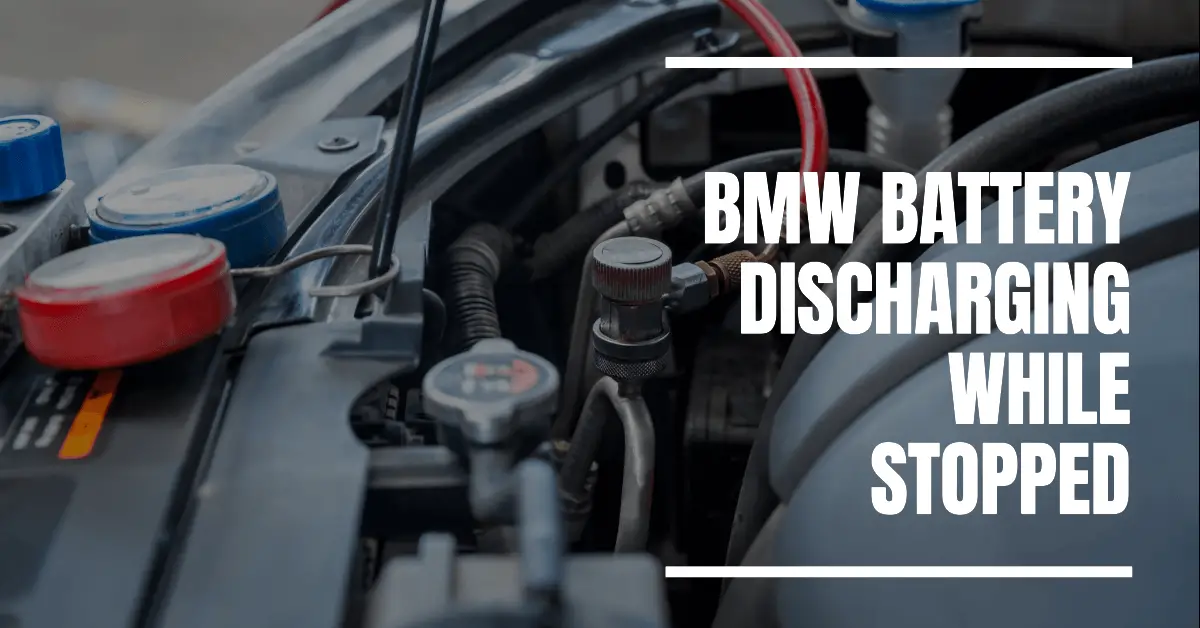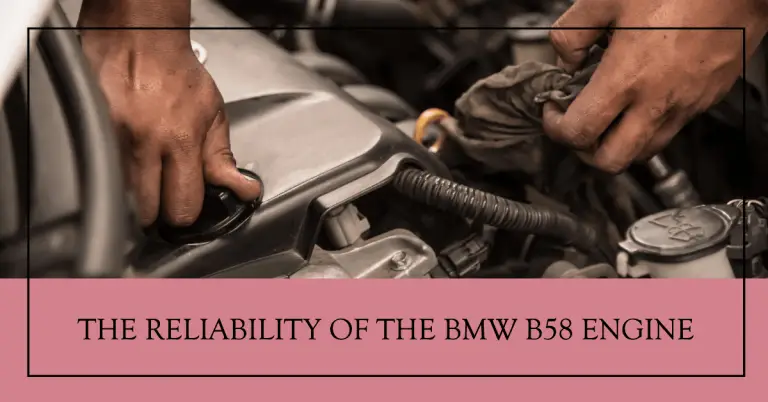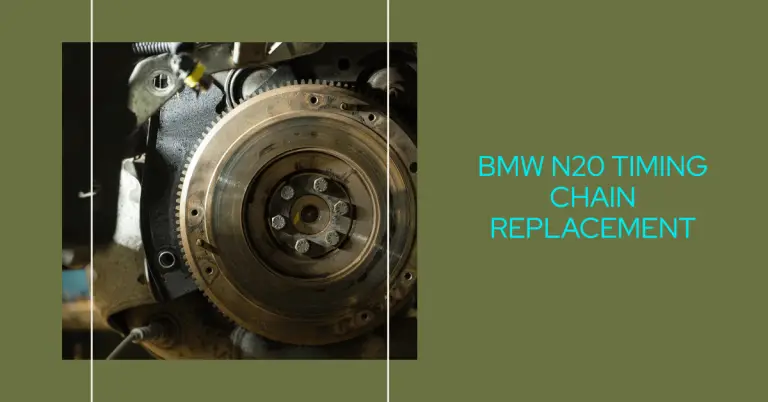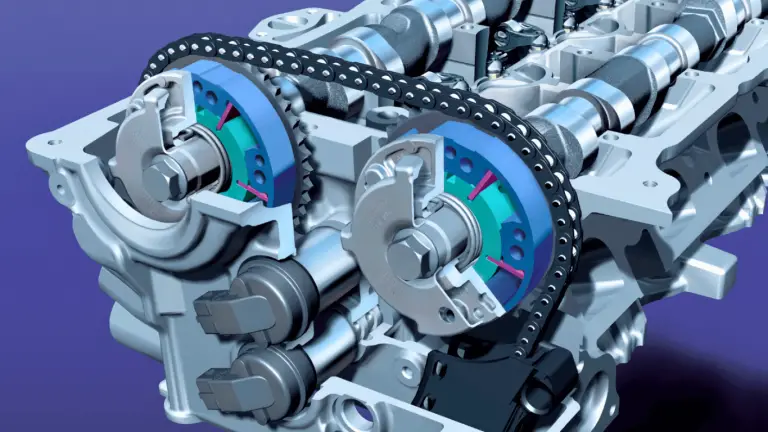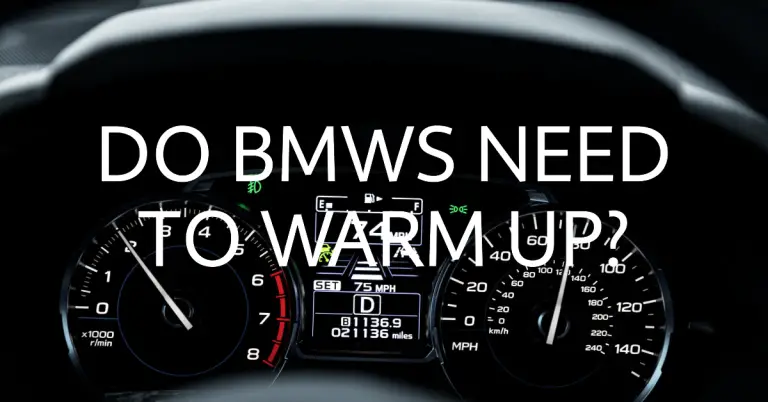BMW Battery Discharging While Stopped: Causes and Solutions
Have you ever gone out to your BMW after it’s been sitting for a few days only to find the battery drained and the car not starting? This frustrating issue of the BMW battery discharging while the car is stopped is all too common. But what causes a BMW battery to drain so fast when the car isn’t even being driven? And more importantly, how can you diagnose and fix this BMW electrical problem?
In this detailed guide, we’ll cover everything you need to know about batteries draining in parked BMWs. You’ll learn how to track down the source of the parasitic drain, find solutions to stop the battery drain, when to replace the battery, maintenance tips, and more. Specific topics covered include:
- Common causes of BMW battery drain while parked
- How to test for parasitic draws with a multimeter
- Locating the faulty component causing the drain
- Preventative steps to avoid BMW battery discharge
- When to replace the old battery
- Step-by-step BMW battery replacement
- Battery charging and maintenance best practices
Gaining a thorough understanding of why this happens and how to properly diagnose battery draining issues can help BMW owners like yourself finally solve this frustrating and all too common problem once and for all. Let’s dive in!
What Causes a BMW Battery to Drain While Parked?
There are a few different culprits that can cause your BMW’s battery to slowly discharge over time while the car is parked in your garage or driveway:
1. Parasitic Drain from Faulty Components
The most common cause of BMW battery drain while parked is what’s known as a parasitic drain (or parasitic load). This refers to an electrical component or system that continues to draw power from the battery even while the car is shut off.
If a component is stuck in the “on” position, it can slowly drain the battery over hours or days. BMWs have dozens of electronics systems that can malfunction and cause a parasitic drain. Common culprits include:
- Faulty alternator diode
- Trunk light staying on
- Glovebox light staying on
- Navigation/infotainment system staying on
- Comfort access system malfunction
- Door lock actuator staying active
We’ll cover how to test for and identify parasitic drains later in this article using a multimeter.
2. Normal Battery Discharge
Even when everything is operating perfectly in your BMW, the battery will still slowly self-discharge over time. This is a normal function of any lead-acid car battery.
The rate of discharge depends on the age and condition of the battery, but a healthy battery will only lose a few percentage points of charge per month while parked.
3. Infrequent Driving and Short Trips
If you only drive short distances and don’t drive that often, the BMW’s charging system may not have enough run time to fully recharge the battery back to 100%.
Repeated short trips with the engine not running long enough can slowly drain down a BMW battery over time.
4. Extreme Hot or Cold Temperatures
Temperature extremes can accelerate battery discharge rates. In very hot under-hood temperatures, a BMW battery may self-discharge faster.
Extreme cold temperatures can also sap battery capacity. The colder it is, the less energy the battery can hold and deliver.
5. Old Battery Reaching End of Service Life
As BMW batteries age and reach the end of their typical 4-5 year service life, they lose capacity and are more susceptible to faster discharge when the car sits.
An old battery much closer to failure will drain much quicker than a new battery would.
6. Door or Trunk Left Open
Simple human error of leaving a door or the trunk open can also lead to BMW battery drain over time.
Interior and trunk lights that remain on can discharge a battery in as little as a day or two if ignored.
7. Interior Lights Left On
Leaving interior map or dome lights on accidentally is another preventable cause of excessive battery drain while parked.
8. Accessories Left Plugged In
Leaving accessories like phone chargers, radar detectors, or other devices plugged into the 12V outlet can provide a direct drain path when the BMW is off.
Now that you know the most common reasons behind a BMW battery discharging while parked, let’s look at how to diagnose and locate the source of the parasitic drain.
How to Diagnose Parasitic Battery Drain in a BMW?
If you suspect your BMW has a parasitic drain, you’ll need to do some diagnostic tests to confirm it and track down the culprit circuit or component. Here is the proper procedure for diagnosing parasitic battery drain issues:
Step 1 – Use a Multimeter to Measure Parasitic Draw
You’ll need an accurate digital multimeter to measure current draw with the car completely shut off.
- Turn off the car and remove the key. Make sure all doors and trunk are closed so interior lights turn off.
- Disconnect the negative battery cable.
- Set your multimeter to measure DC milliamps.
- Place the red multimeter probe on the negative battery post.
- Place the black probe on the disconnected negative cable.
- A reading above 100 milliamps indicates a parasitic drain. Anything below 35mA is normal.
For example, if you measure 178mA with everything off, that’s a clear sign of excessive drain that will kill the battery overnight.
Step 2 – Pull Fuses to Isolate the Faulty Circuit
Once you’ve confirmed a parasitic draw over 100mA, you need to isolate the culprit circuit.
- Leave the negative cable disconnected from the battery.
- Pop open the fuse boxes and pull out fuses one at a time.
- Keep measuring the current draw after each fuse removal.
- When the draw drops below 50mA, you’ve likely identified the source fuse.
This fuse powers the faulty component causing the battery drain. Checking a BMW wiring diagram can help trace the fuse to the associated system.
For example, if removing the F56 telemetry fuse drops the draw to 38mA, you know the telematics or navigation system is staying on and needs repair to prevent further battery drain.
Step 3 – Inspect Components and Make Repairs
With the drain-causing circuit isolated, you can inspect components and make any necessary repairs. Visual inspections, voltage drop tests, and component replacements may be needed.
- Check for stuck-on interior lights, malfunctioning control modules, shorted wiring, and damage.
- Consult BMW repair manuals and wiring diagrams as needed.
- Repair or replace the faulty component and confirm parasitic draw resolved.
Properly diagnosing and fixing BMW parasitic battery drains requires patience, wiring diagrams, a logical diagnostic approach, and electrical testing skills. Enlist a knowledgeable BMW technician for assistance if needed.
Common Sources of Parasitic Draws in BMWs
Now that you know how to test and measure current draw, here are some of the most common sources of parasitic battery drains on BMW models:
1. Faulty Alternator Diode
The alternator diode is designed to prevent discharge from the alternator back into the battery when the car is off. If this diode fails, the battery can slowly drain. Usually requires alternator repair or replacement.
2. Trunk Light Staying On
BMW trunk lights can malfunction and stay on constantly even when the trunk is closed. Visually inspect if the light is on, and replace the faulty switch or wiring as needed.
3. Glovebox Light Staying On
Same as the trunk light, BMW glove box illumination lights can fail and remain on, slowly draining the battery. Inspect the switch and wiring for faults.
4. Navigation System Staying On
BMW navigation systems can sometimes freeze up or malfunction by staying on indefinitely with the key off. This will cause steady battery drain. Requires repair of the head unit.
5. Comfort Access System Malfunction
BMW Comfort Access allows keyless vehicle entry when you grab the door handle. If this system malfunctions, it can lead to constant drain. Usually requires coding or replacement of faulty control modules to address.
6. Door Lock Actuator Staying Active
Sticking door lock actuators that remain partially engaged can also slowly drain BMW batteries over time. Inspect, repair, or replace the faulty door lock actuator.
There are many other possible sources of parasitic battery drain depending on the BMW model and year. Proper electrical diagnosis is key to locating the problem component in your specific vehicle.
Preventing BMW Battery Drain When Parked
While parasitic drains are often unavoidable if a component fails, there are still some preventative steps BMW owners can take to avoid coming out to a dead battery:
Turn Off All Lights and Accessories
Make sure all interior and trunk lights are off and no accessories are left plugged in. One small oversight can lead to a drained battery overnight.
Lock All Doors
Locking the doors triggers interior lights to turn off. Always lock your BMW when parking it to avoid lights staying on.
Use a BMW Battery Tender
For seasonal storage or extended parking, maintain the battery with a BMW-specific battery tender to prevent discharge over months.
Drive Regularly
Driving your BMW at least 2-3 times a week for 20+ minutes allows the charging system to fully replenish the battery. Infrequent driving leads to gradual drain over time.
Park in a Garage
If you park outside, extreme hot and cold temps can accelerate discharge. Park in a garage when possible to keep your BMW battery closer to room temperature.
While these tips can help, a malfunctioning component can still kill a BMW battery overnight. Catching and fixing parasitic drains promptly is key to keeping your battery charged.
When to Replace the Battery in a BMW?
With BMW batteries ranging from $200-400 for a replacement, you don’t want to replace it too early or risk being stranded with a dead one. Here are signs it’s time for a new BMW battery:
Over 5 Years Old
The typical BMW battery lifespan is 4-5 years. It’s a safe bet to replace at the 5 year mark, even without other symptoms.
Frequent Jump Starts Required
Needing frequent jump starts is a clear indicator your BMW battery is on its way out and can no longer hold a charge.
Loss of Reserve Capacity
Using a battery tester, your battery should still have 80% charge after sitting overnight. Significantly less means diminished reserve capacity that won’t meet your car’s needs.
Corroded or Damaged Terminals
Corrosion at the battery terminals or damage like cracking or bulging cases signals it’s time for a replacement before failure occurs.
Don’t get stranded by pushing it too far with an old battery. BMW batteries give limited warning signs before they die completely. Err on the side of replacement once you notice any of the above indicators.
Steps to Replace BMW Battery
With the right tools and safety precautions, you can replace your BMW battery yourself to save on labor costs. Here are the key steps:
1. Disconnect the Negative Cable First
Always disconnect the negative terminal first to avoid short circuits while working on the positive side.
2. Remove the Battery Hold-Down Clamp
The hold-down clamps or brackets secure the battery tightly. Loosen and remove them so the battery can be lifted out.
3. Lift Out the Old Battery
With the cables off and clamps removed, carefully lift the battery out of the tray without spilling acid. Place an absorbent pad under the tray if needed.
4. Install the New Battery
Set the fresh new battery back into the battery tray, being mindful of the terminal locations and properly seating it.
5. Reconnect the Positive Cable First
When reconnecting the battery, always connect the positive red cable first before the negative. This avoids potential sparks.
6. Code the New Battery
New BMW batteries must be properly coded and registered with the vehicle through the OBD port. Most shops can code it quickly after installation.
Be sure to dispose of old batteries properly and protect your eyes and skin while handling them. Installing a new battery will get your BMW humming again.
Maintaining Your BMW Battery
Your BMW relies on a robust battery to start and power all the onboard electronics. Follow these maintenance practices to maximize your new or existing battery’s lifespan:
- Keep the battery terminals and connections clean and tight to ensure power flow. Remove any corrosion or debris buildup.
- Recharge your BMW battery at least once a month in cold climates, twice a month in warm climates. Use a quality automotive battery charger or tender recommended for your BMW.
- Drive for at least 15-20 minutes even after short trips under 10 minutes before turning off the car. This allows the alternator to fully recharge the battery.
- Consider an AGM or lithium battery upgrade for even longer life and reduced discharge rates when parked.
- Check your battery’s charge status and test for reserve capacity at least yearly. Address any issues immediately.
Following these simple maintenance practices will help maximize the lifespan of your BMW battery, avoid unexpected failure, and reduce the chances of coming out to a dead battery with no warning. An ounce of prevention is worth a pound of cure when it comes to your BMW’s costly battery.
Key Takeaways to Stop BMW Battery Drain
Dealing with a mysteriously dead BMW battery when parked can be frustrating and inconvenient. To wrap up, here are the key tips to remember:
- Use a multimeter to diagnose parasitic drains over 100mA when parked. Isolate the faulty circuit pulling the excessive current.
- Address the root cause like a stuck-on glovebox light or faulty alternator diode to prevent continued battery drain.
- Exercise preventive steps like locking doors, unplugging accessories, driving regularly, and using a battery tender.
- Test reserve capacity and look for corrosion or damage to determine when battery replacement is needed.
- Follow battery maintenance best practices to maximize the lifespan of your new or existing BMW battery.
Stopping excessive battery discharge in your parked BMW comes down to thorough electrical diagnosis, fixing underlying issues promptly, prevention, and proper ongoing battery care. With the right knowledge and testing equipment, you can break the vicious cycle of discovering a dead BMW battery every few days!

